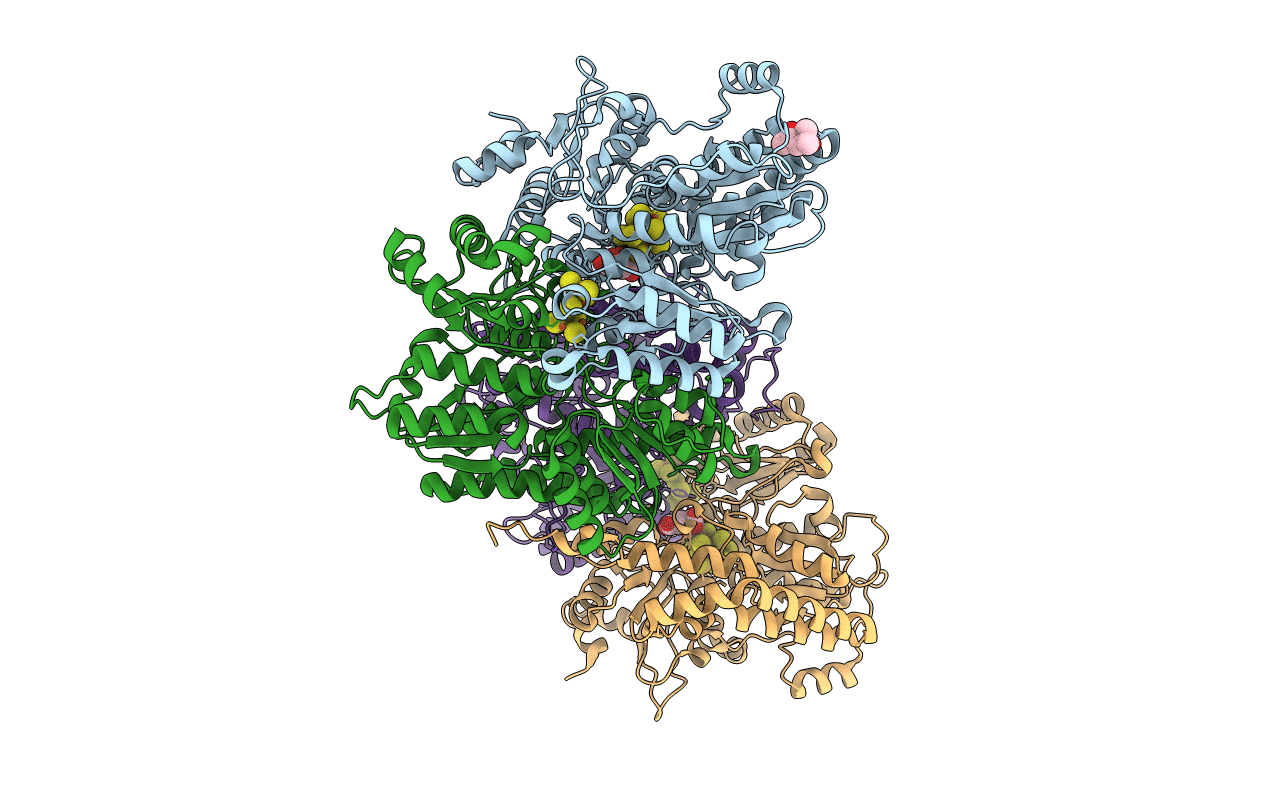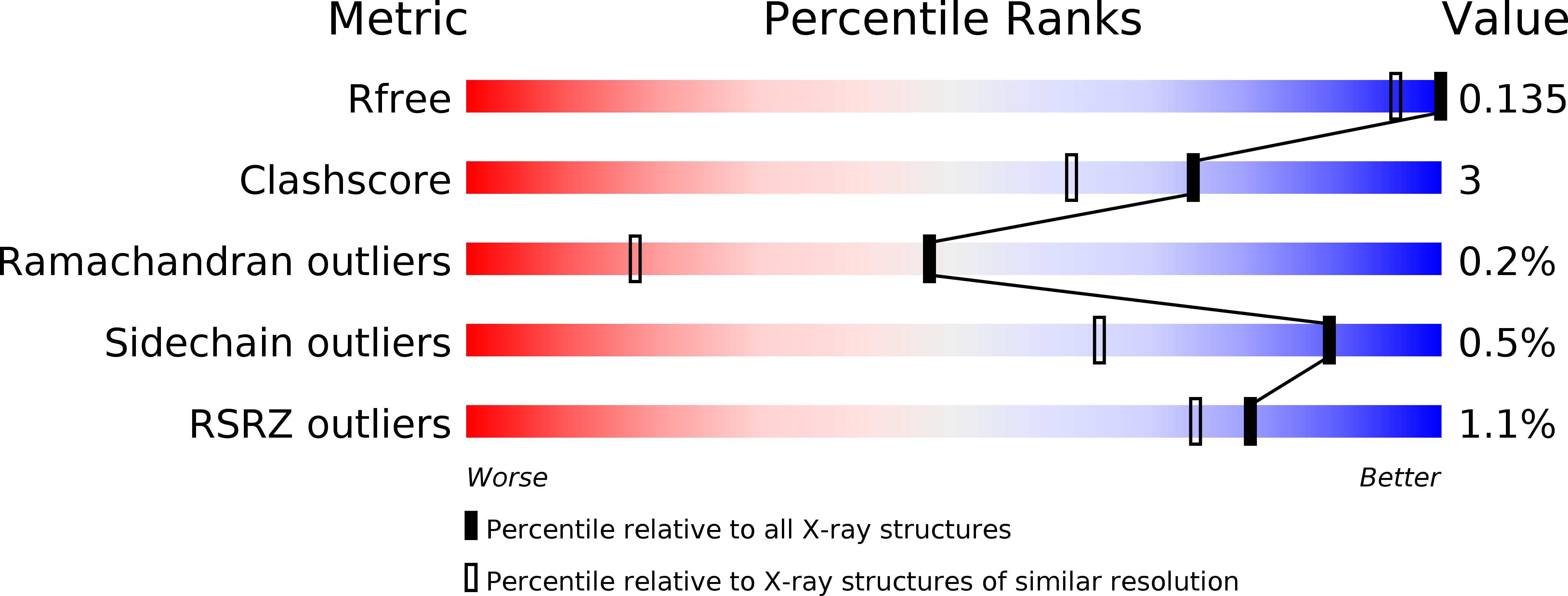
Deposition Date
2014-09-10
Release Date
2015-02-11
Last Version Date
2023-12-27
Entry Detail
PDB ID:
4WES
Keywords:
Title:
Nitrogenase molybdenum-iron protein from Clostridium pasteurianum at 1.08 A resolution
Biological Source:
Source Organism:
Clostridium pasteurianum (Taxon ID: 1262449)
Method Details:
Experimental Method:
Resolution:
1.08 Å
R-Value Free:
0.13
R-Value Work:
0.11
R-Value Observed:
0.11
Space Group:
P 1 21 1


